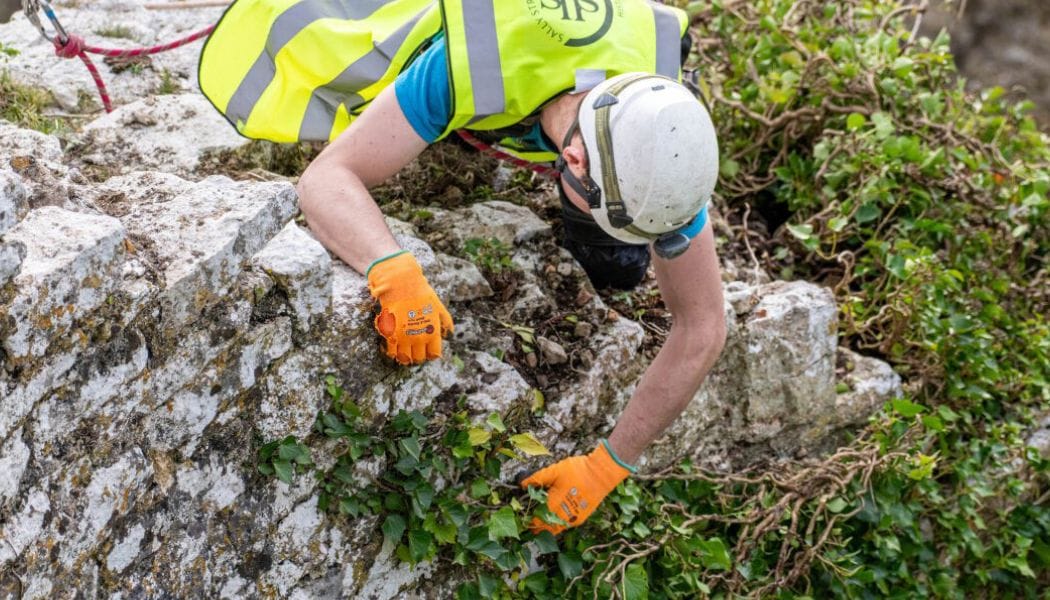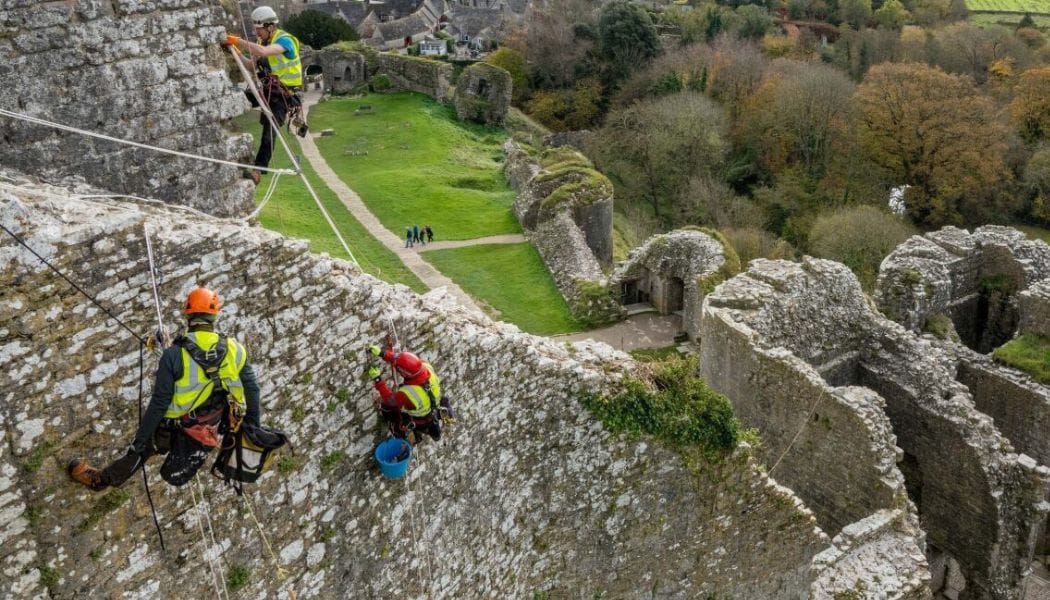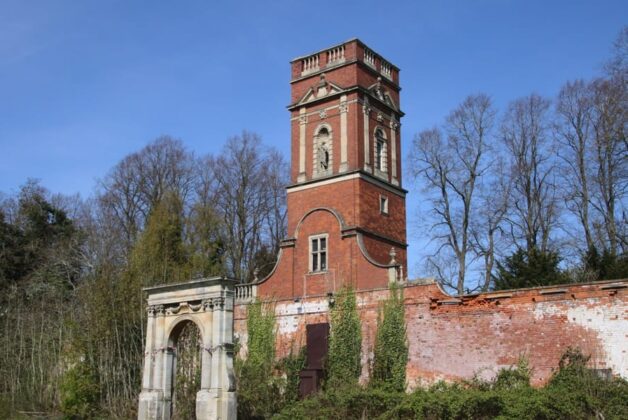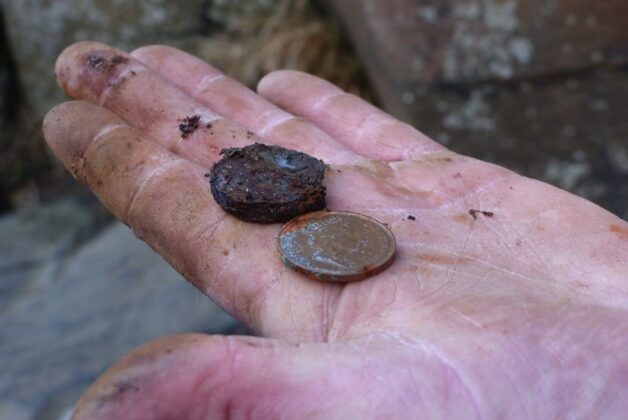Image: Corfe Castle Conservation © National Trust / Neil Davidson
Stones are falling from the historic Dorset site as summer droughts and wetter winters have increased damaging vegetation
A £2 million conservation project at the National Trust’s Corfe Castle in Dorset is hoped to reverse issues caused by increasingly extreme weather.
The project, the biggest at the castle since the 1950s, is already mostly funded but is now looking for a final £100,000 in local fund-raising.
It will use traditional techniques with lime mortar and locally sourced aggregate to tackle problems across the site, including stones falling from the building which is perched on a steep-sided hill rising 55 metres above the valley.
Over the next three years specialist rope access teams working for the National Trust will conserve the walls to remove vegetation and prevent future damage.
Repairs will be made to its nine towers, the keep and the eight-metre-high curtain wall. While the building itself is structurally stable, the Trust said there is concern about the accelerated growth of vegetation such as valerian which grows its roots deep into the core of the walls.

By removing the damaging vegetation from the castle, the work will, in some cases, reveal parts of the walls not seen for over 100 years, the conservation charity said.
The base of the castle’s east wall is currently covered in ivy with rubble at the base of the wall. The Trust said there is an arch last seen 30 years ago, which is potentially the site of the gateway through which Parliamentary soldiers were given access to the castle.
Project manager Christina Newnham explained: “The real impact we saw was the drought in 2022 when the walls dried out and stones were regularly falling. The hot weather and heat dries out the mortar but it also kills off vegetation. Where plants have roots deep in the walls, as they die and shrink, the stones loosen, putting them at risk of falling.
“Lime mortar needs moisture to be stable, as do the plants, and it was obvious after the first rain following the drought that the stones immediately stopped falling from the walls.
“We currently spend money every year on resetting fallen stones and other repairs, but with the vegetation removed and the walls in better condition, we can then focus that annual budget on managing vegetation growth and keeping the castle in good order, protecting it for the future.”
As well as replacing mortar, the exposed wall tops are protected with a technique called ‘soft capping’ by covering exposed wall tops and tumbles with grass. The technique prevents too much water from getting into the rubble core of the wall.
The project is being supported with a grant of £150,000 from the Wolfson Foundation as well as a commitment from the National Trust’s own funds, and its newly launched public fund-raiser.





